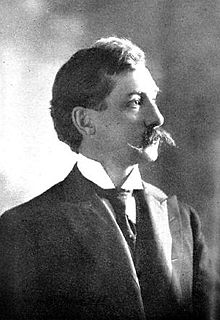Fenimore Chatterton
| Fenimore Chatterton | |
|---|---|
 |
|
| 6th Governor of Wyoming | |
|
In office April 28, 1903 – January 2, 1905 |
|
| Preceded by | DeForest Richards |
| Succeeded by | Bryant Butler Brooks |
| 3rd Secretary of State of Wyoming | |
|
In office 1899–1907 |
|
| Governor |
DeForest Richards himself |
| Preceded by | Charles W. Burdick |
| Succeeded by | William Schnitger |
| Member of the Wyoming State Legislature | |
|
In office 1890-1893 |
|
| Personal details | |
| Born | July 21, 1860 Oswego County, New York |
| Died | May 9, 1958 (aged 97) |
| Political party | Republican |
| Spouse(s) | Stella Wyland Chatterton |
| Alma mater |
George Washington University University of Michigan |
Fenimore Chatterton (July 21, 1860 – May 9, 1958) was an American businessman, politician, and lawyer. He was the sixth Governor of Wyoming from April 28, 1903 until January 2, 1905.
Chatterton was born in Oswego County, New York, but raised in Washington, D.C.. He attended the George Washington University, then Millersville State Normal School in Lancaster, Pennsylvania. In 1878, he moved to Sheridan, in Wyoming Territory, and set up as a businessman. He received a law degree from the University of Michigan in 1892. Chaterton married Stella Wyland Chatterton.
In 1888, he began his political career by successfully running for treasurer and probate judge of Carbon County. He served time in two classes of the Wyoming State Legislature from 1890 until 1893. He was the Wyoming Republican state chair from 1893 to 1894.
In 1898, he was elected Secretary of State, but his tenure was interrupted by the death of Governor DeForest Richards in 1903, thrusting him into the position of Governor. Chatterdon served as Governor from April 28, 1903 to January 2, 1905. It was during Chatterton's time as Governor that the hanging of Tom Horn occurred; it has been speculated that Chatterton's failure to win re-election as Governor in 1905 was the result of his refusal to commute Horn's death sentence. Chatterdon was not nominated by his party to fill the office of governor for the 1904 election, but continued to serve as Secretary of State until his term expired in 1907.
...
Wikipedia
